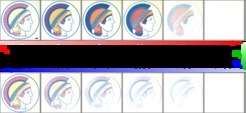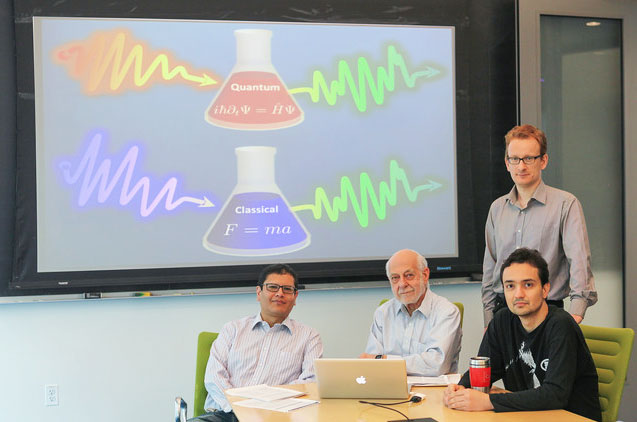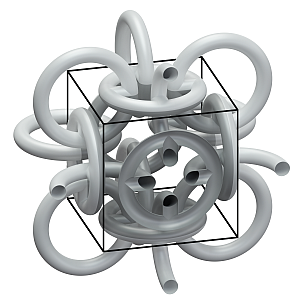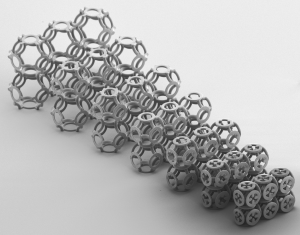It takes a while (i.e., you have to read the abstract for the paper) to get to the nanoscale part of the story. In the meantime, here are the broad brushstrokes (as it were) from a group of researchers in Hungary, from an Oct. 11, 2017 American Chemical Society (ACS) news release (also on EurekAlert),
Gold has long been valued for its luxurious glitter and hue, and threads of the gleaming metal have graced clothing and tapestries for centuries. Determining how artisans accomplished these adornments in the distant past can help scientists restore, preserve and date artifacts, but solutions to these puzzles have been elusive. Now scientists, reporting in ACS’ journal Analytical Chemistry, have revealed that medieval artisans used a gilding technology that has endured for centuries.
Researchers can learn a lot about vanished cultures from objects left behind. But one detail that has escaped understanding has been the manufacturing method of gold-coated silver threads found in textiles from the Middle Ages. Four decades of intensive research yielded some clues, but the findings have been very limited. Study of the materials has been hindered by their extremely small size: A single metal thread is sometimes only as thick as a human hair, and the thickness of its gold coating is a hundredth of that. Tamás G. Weiszburg, Katalin Gherdán and colleagues set out to fill this gap.
Using a suite of lab techniques, the researchers examined medieval gilded silver threads, and silver and gold strips produced during and after the Middle Ages. The items come from European cultures spanning the 13th to 17th centuries. The researchers characterized the chemistry of the silver thread, its gold coating, the interactions between the two and the shape of metal strips’ edges. To characterize the threads and strips, the researchers combined high-resolution scanning electron microscopy, electron back-scattered diffraction with energy-dispersive electron probe microanalysis and other analytical methods. Though previous studies indicated that these tiny objects were manufactured by a mercury-based method in fashion at that time, the new results suggest that the threads were gilded exclusively by using an ancient method that survived for a millennium. The goldsmiths simply heated and hammered the silver sheets and the gold foil together, and then cut them into strips. It was also possible to determine whether scissor- or knife-like tools were used for cutting. The results also show that this process was used widely in the region well into the 17th century.
The authors acknowledge funding from the European Social Fund.
Here’s an image of medieval bling,
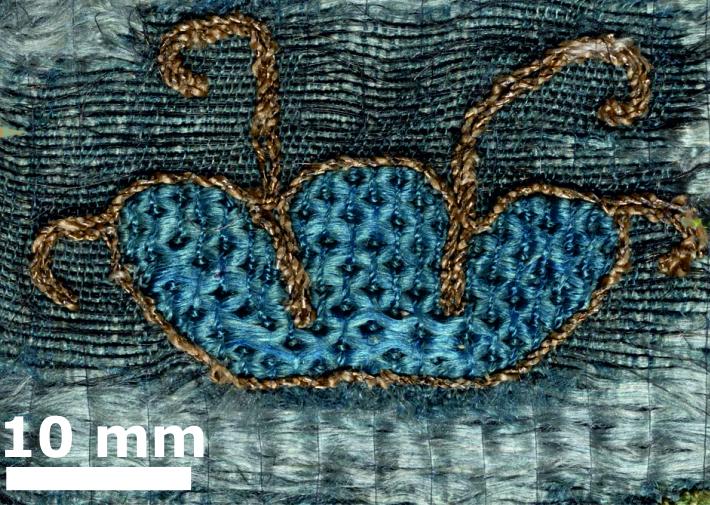
Caption: A new study unravels how medieval artisans embellished textiles with gold. Credit: The American Chemical Society
Finally, here’s the abstract with the information about the nanoscale elements (link to paper follows abstract),
Although gilt silver threads were widely used for decorating historical textiles, their manufacturing techniques have been elusive for centuries. Contemporary written sources give only limited, sometimes ambiguous information, and detailed cross-sectional study of the microscale soft noble metal objects has been hindered by sample preparation. In this work, to give a thorough characterization of historical gilt silver threads, nano- and microscale textural, chemical, and structural data on cross sections, prepared by focused ion beam milling, were collected, using various electron-optical methods (high-resolution scanning electron microscopy (SEM), wavelength-dispersive electron probe microanalysis (EPMA), electron backscattered diffraction (EBSD) combined with energy-dispersive electron probe microanalysis (EDX), transmission electron microscopy (TEM) combined with EDX, and micro-Raman spectroscopy. The thickness of the gold coating varied between 70–400 nm [emphasis mine]. Data reveal nano- and microscale metallurgy-related, gilding-related and corrosion-related inhomogeneities in the silver base. These inhomogeneities account for the limitations of surface analysis when tracking gilding methods of historical metal threads, and explain why chemical information has to be connected to 3D texture on submicrometre scale. The geometry and chemical composition (lack of mercury, copper) of the gold/silver interface prove that the ancient gilding technology was diffusion bonding. The observed differences in the copper content of the silver base of the different thread types suggest intentional technological choice. Among the examined textiles of different ages (13th–17th centuries) and provenances narrow technological variation has been found.
Here’s a link to the paper,
Medieval Gilding Technology of Historical Metal Threads Revealed by Electron Optical and Micro-Raman Spectroscopic Study of Focused Ion Beam-Milled Cross Sections by Tamás G. Weiszburg, Katalin Gherdán, Kitti Ratter, Norbert Zajzon, Zsolt Bendő, György Radnóczi, Ágnes Takács, Tamás Váczi, Gábor Varga and György Szakmány. Anal. Chem., Article ASAP DOI: 10.1021/acs.analchem.7b01917 Publication Date (Web): September 19, 2017
Copyright © 2017 American Chemical Society
This paper is behind a paywall.
One final comment, if you read the abstract, you’ll see how many technologies the researchers needed to use to examine the textiles. How did medieval artisans create nanoscale and microscale gilding when they couldn’t see it? I realize there are now some optical microscopes that can provide a view of the nanoscale but presumably those artisans of the Middle Ages did not have access to that kind of equipment. So, how did they create those textiles with the technology of the day?
